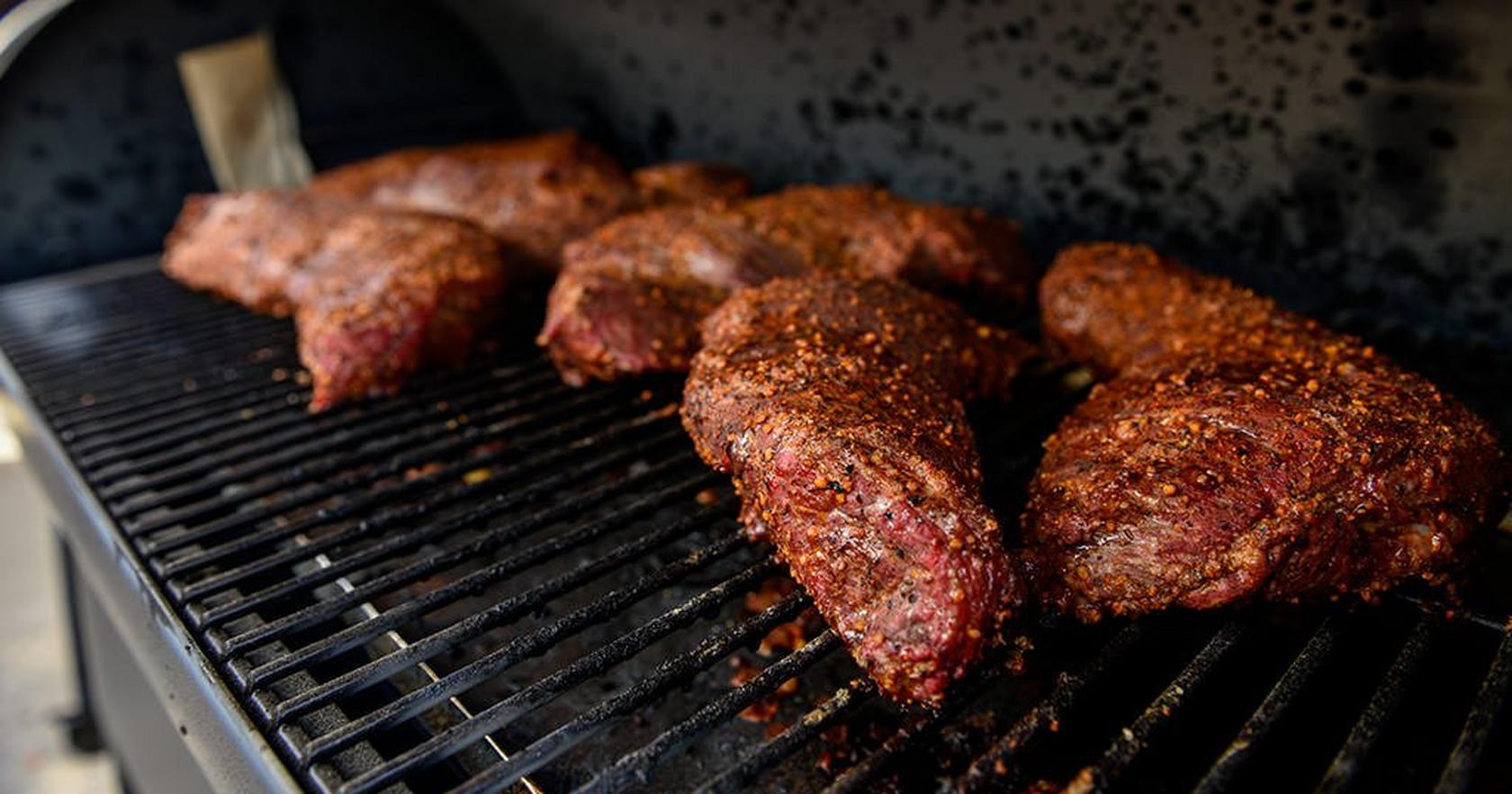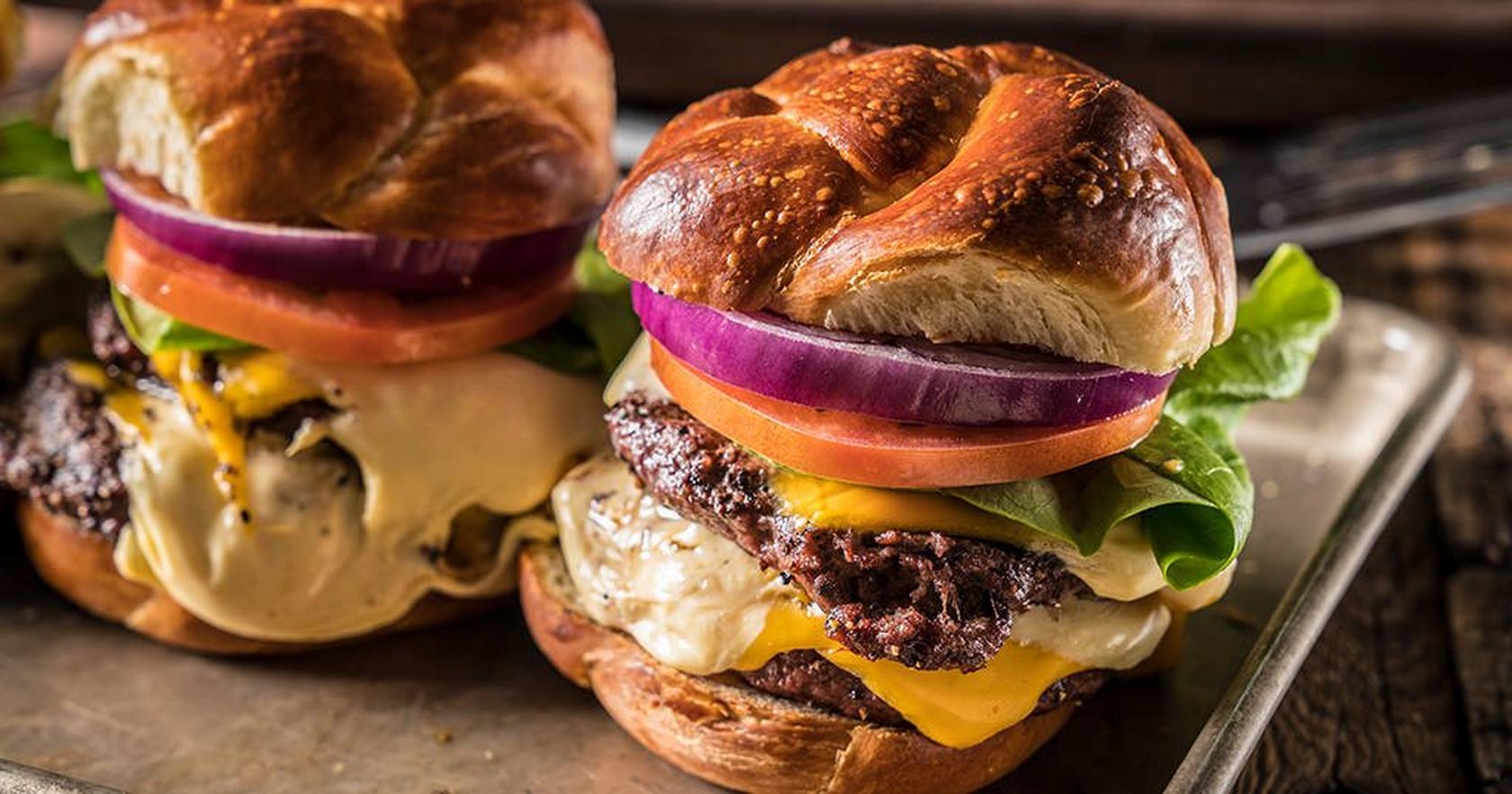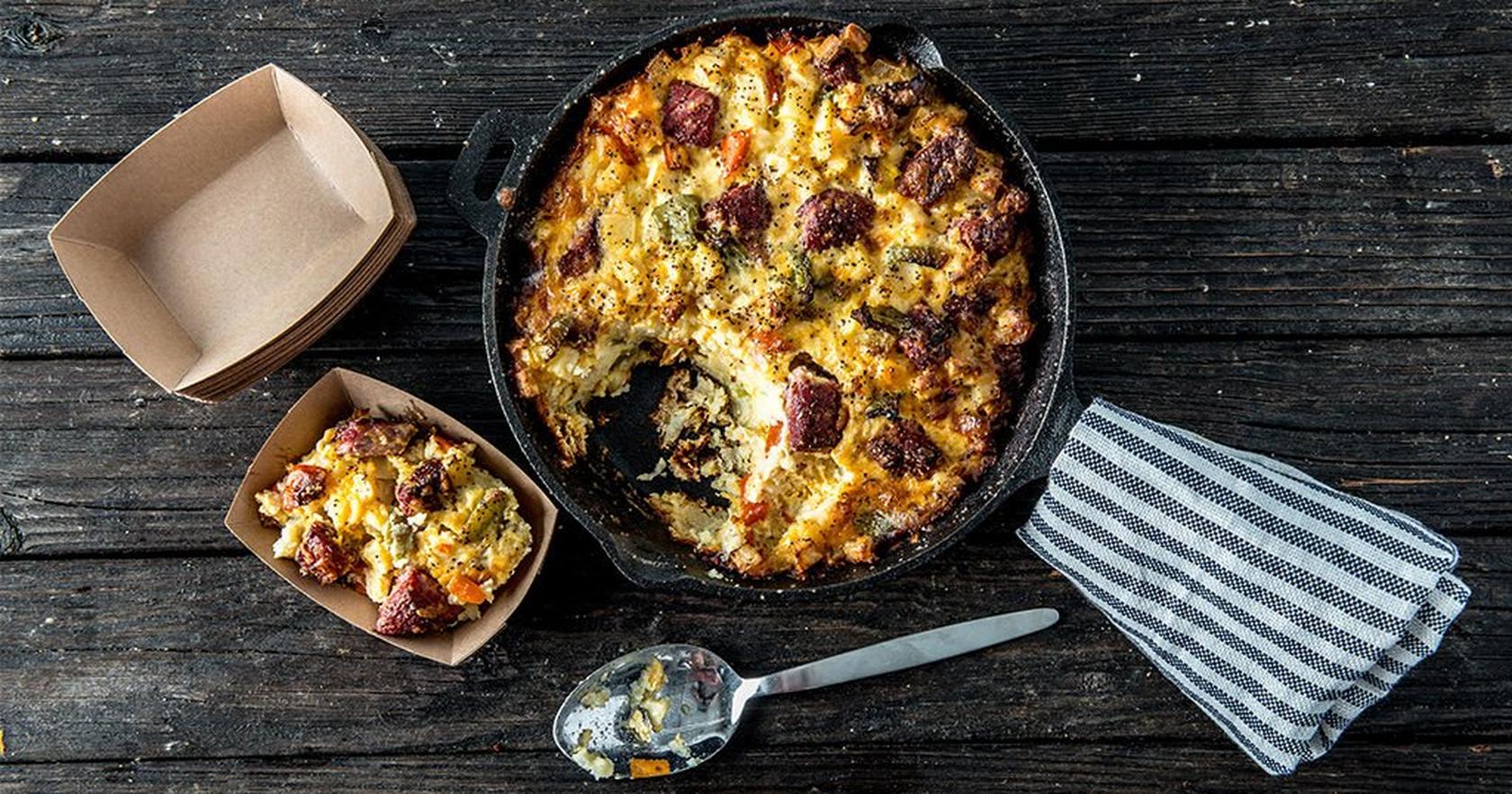

Wagyu beef is prized around the world for its savory flavor and extremely tender, almost buttery, texture. But it's also quite the luxury item, commanding prices that run from $75 per pound to more than $250 per pound depending on the cut, coutnry of origin, and cattle breed.
And like all luxury items, that high price has sparked all sorts of imitators, as well as methods to certify and authenticate real Japanese—and American and Australian—wagyu beef.
But just what is so special about wagyu beef, anyway? That’s what we’re here to explain today, by giving you an insider’s guide to the history of wagyu, an explanation of what makes it so unique, a few notes about wagyu grading systems, and the best ways to prepare wagyu beef.
Oh, but one more thing before we move on: The word waygu (pronounced wah-gyoo) literally translates to Japanese cattle. And Japan is where it all starts.
The History of Wagyu
To understand how special wagyu is, we’ll need to travel back in time to Japan, circa 1868. This was the first year of the Meiji Restoration, and it marked the opening of Japan to trade with the outside world for the first time in 250 years.
Among the many technologies and cultural elements imported into Japan at this time came new breeds of cattle. Although it took roughly 15 years to commence crossbreeding these newcomers with the cherished local breeds, a dedicated mission was launched around the turn of the century to identify and cultivate the finest crossbreeds from both Japanese and foreign stocks.
After 10 years of experimentation, though, Japanese animal experts noted that the overall quality of their breeds had reached a peak, and was steadily declining. All crossbreeding efforts were stopped, and by 1919 only the best results of crossbreeding were registered as “Improved Japanese Cattle.”
In 1944, four separate breeding strains were selected for certification:
- Japanese Black, which accounts for 90 percent of beef cattle in Japan
- Japanese Brown (or Red), all of which come from the Shikoku and Kyushu islands
- Japanese Polled, from the Yamaguchi Prefecture
- Japanese Shorthorn, from Northern Japan, accounts for less than 1 percent of all beef cattle in Japan
And four breeds are what today constitute wagyu, or Japanese cattle.
Of course, when it comes to wagyu beef, there’s more to it than that. But before we explain what makes wagyu so special—and how the Japanese government is protecting its unique designation and characteristics—let’s take a closer look at how wagyu made its way to America, too.
History of Wagyu in the US
American wagyu beef, as you might gather from the name, is a bit of a misnomer; literally translated, it would read as “American Japanese cattle beef.”
So what is American wagyu beef, exactly? Well, it’s a uniquely American invention—a crossbreed of one of the four recognized Japanese cattle breeds with American Angus or Continental breeds. Four wagyu bulls were brought to America in 1976, and they’re the ancestors of all American wagyu produced today.
There are differences between Japanese and American wagyu though, and they’re not really interchangeable with each other. That comes down to the characteristics of the meat, which is what we’ll be examining next.
Wagyu Beef Characteristics
All those years of careful crossbreeding in Japan led to the development of a cow whose meat is truly unique. With a much higher percentage of fats than standard cuts of beef wagyu beef is a rich and luxurious delicacy that literally melts inyour mouth.
Here’s why:
Marbling
Marbling, the welcome intramuscular fat that shows up as white streaks against the red meat, is one way wagyu stands apart. One look at all those white streaks in a real wagyu steak will clue you in that this meat is special. The cattle is bread to have mor eof that fat, which makes a cooked bite of it intensely flavorful and tender.
Tenderness
Wagyu's tenderness and melt-in-your-mouth texture is unmatched. With a special diet of high-quality grains, regular massages, and a spacious and clean environment, the cattle produce meat that is marbled to perfection and ready to grill to perfection.
Flavor
All of that marbling, and the tender, juicy texture it gives, makes wagyu beef a very different flavor experience when compared to your standard steak. It’s less beefy and more buttery than a tyoical American steak.
Rarity
Last but not least, there just isn’t much wagyu to go around. Real wagyu only comes from Japan, and its producers are required to adhere to strict quality control guidelines. That is what makes it so rare—and expensive.
Grades of Wagyu Beef
Within the world of wagyu beef, there’s a strict grading system used to indicate each cut of meat’s quality. In fact, there are three different grading systems you might see in relation to a cut of Wagyu: The Japanese system, the Beef Marbling Standard, and the USDA’s rating system. Let’s look at each in more detail.
Japanese Beef Grading System
Every piece of genuine Japanese Wagyu will have a score attached to it, indicated by a letter (A, B, or C) and a number (from 1 to 5).
The letter describes the yield score and is less important to the quality of the final steak. Instead, it refers to the amount of meat that the individual cow will yield. A ranking of “B” indicates a standard amount of meat, while “A” is above standard and “C” is below standard.
The number is what you’ll really want to look at in regard to the quality of Wagyu. After careful consideration of the steak’s firmness, coloring, fat distribution, and even how the cattle were raised, regulators will assign it a number from 1 to 5. A rating of 5 indicates the highest quality beef possible, while a rating of 1 is the lowest.
Beef Marbling Standard (BMS)
Scored from 1 to 12, with a grade of 12 being the highest, the Beef Marbling Standard ranks a specific cut of beef’s quality and appearance of marbling. This rating factors into the final consideration for the Japanese beef grading system.
United States Department of Agriculture (USDA)
Additionally, you may see American wagyu steaks graded by the USDA rating system. Primarily as Prime, Choice, and Select.
Being graded by the USDA is optional, however, and not all wagyu beef will carry a USDA rating—though any true Japanese Wagyu would easily rank at prime or above, as the Japanese grading system goes higher than our American one. For exmaple, a steak labeled prime in the U.S. would max out at about 5 on the BMS, while Japanese wagyu can go as high as 12.
(To learn more about the USDA beef grading system, refer to their website.)
Difference Between Wagyu Beef and Other Beef
By now, you should be developing a clear picture of the difference between wagyu beef and other kinds of beef. It all comes down to the quality of the beef—its marbling, texture, color, etc.—as well as where the beef comes from. So let’s get into the specifics of Wagyu, based on its region of origin.
Wagyu vs. Kobe
Kobe beef is to wagyu, as Champagne is to sparkling wine—i.e., it comes from a specific subregion of the area and is held to extremely high standards.
Specifically, Kobe beef comes from the Tajima strain of Japanese Black Cattle, and it is raised in Japan’s Hyogo Prefecture. It is subject to incredibly strict rules and regulations set out by Japan’s Kobe Beef Marketing and Distribution Promotion Association.
Kobe beef is so rare, in fact, that not a single Kobe beef steak made it out of Japan until 2012. Beware of imitators, as genuine Kobe beef is incredibly rare, and some unscrupulous vendors are trying to make a quick buck off of calling their standard beef “Kobe.”
American Wagyu vs. Japanese Wagyu
As mentioned previously, American wagyu is the U.S. take on the Japanese classic. It is produced from American Angus cattle that have been crossbred with Japanese cattle, and as a result, it has a much different flavor and texture.
American wagyu offers a version of the Wagyu experience at a much lower price. Because grazing land is so much more abundant in America, and the restrictions for raising American Wagyu are far less rigid, it costs just a fraction of the genuine Japanese beef. For example, a single pound of Japanese Wagyu might cost upwards of 200 dollars, while American Wagyu might cost half that or less.
There are notable differences in the taste and texture of American wagyu as compared to Japanese wagyu, though. American wagyu is “beefier”, with a higher proportion of meat to fat, and its fat distribution is quite different.
American Wagyu vs. Australian Wagyu
Around the same time that America was importing its first Japanese bulls, Australia thought to do the same. Their breeding stock comes from the same cross of Japanese wagyu and American Angus, making the resulting meat very similar to American Wagyu—but the Australians have their own grading system.
Meat Standards Australia (MSA) is responsible for grading the continent’s Wagyu beef, and they assign grades from 100 (no marbling) to 1190 (huge amounts of marbling). There’s also a separate system, called AUS-MEAT, which assigns grades from 0 to 9.
Australian Wagyu is a rarity in the United States, though you may find it at some specialty butchers.
Where To Buy Wagyu Beef
It is incredibly rare to find a genuine cut of Japanese wagyu at your local butcher’s counter. So if you’re committed to trying the real thing, you’ll probably need to mail order it.
The Wagyu Shop and The Meatery carry many types of wagyu beef. Snake River Farms offers American Wagyu in a variety of cuts and grades, and Allen Brothers is a trusted source for Australian Wagyu.
Best Ways To Prepare Wagyu Beef
Preparing wagyu beef is not too much different than preparing conventional beef, though due to its price you want to take care not to overcook it. You can look here for specific tips on how to cook wagyu.
One thing to keep in mind is that because it is so rich tasting, a little goes a long way, which is helpful given its high price. If a recommended serving size for convetnional beef is about 6 ounces, wagyu is more like one or two ounces.
Wagyu Beef Traeger Recipes
It's easy to create restaurant-quality wagyu on your Traeger and achieve that mouthwatering, melt-in-your-mouth experience right in your backyard.

This wagyu burger recipe is a flavor-packed masterpiece that celebrates the rich, buttery goodness of this Japanese delicacy with an American spin on it. Crafter from the finest ground wagyu, these burgers are seasoned to perfection and then further elevated with wood-fired flavor over Hickory pellets.
Our Wagyu Tri-Tip recipe is a culinary masterpiece designed to showcase the exceptional tenderness and flavor of this premium beef cut. Seasoned with a blend of savory spices and herbs, the tri-tip is then perfectly grilled on your Traeger for a smoky, mouthwatering experience.

Dive into a breakfast fit for royalty with our Royal Corned Beef Hash recipe. This hearty and flavorful dish takes the classic corned beef hash to a whole new level by infusing it with rich, smoky flavors from your Traeger grill. With perfectly grilled corned beef, crispy potatoes, and a hint of wood-fired magic, it's a breakfast that'll make you feel like a culinary monarch at your own dining table.
Wagyu Beef FAQ
That just about covers it for wagyu beef. But before we go, we’d like to answer some of the most common questions about wagyu.
Why is wagyu beef expensive?
Genuine Japanese Wagyu is expensive for a few reasons. It comes from Japan, where grazing land is at a premium, and the cattle raised for Wagyu are given extra special care. Furthermore, the name Wagyu is a protected designation in Japan, so there are certification and registration fees associated with this type of meat as well.
How is wagyu beef raised?
Wagyu beef cattle are raised with meticulous attention to their well-being and diet. They typically enjoy spacious, clean environments, and their diet often includes a special blend of grains and forage. To promote the development of marbling, some Wagyu cattle receive unique care practices, such as occasional massages and even beer in their diet. This careful upbringing contributes to the exceptional quality and flavor of Wagyu beef.
Is wagyu beef healthy?
Wagyu beef, like any other type of beef, contains essential nutrients like protein, vitamins, and minerals. However, it is also known for its high-fat content, particularly intramuscular fat or marbling, which contributes to its rich flavor and tenderness. While the fat in Wagyu beef is predominantly monounsaturated fat, which is considered heart-healthy, it's essential to consume it in moderation as part of a balanced diet.
What percent fat is Wagyu beef?
Wagyu beef will have different amounts of fat based on its marbling grade, but it is common for a Wagyu steak to be 30 percent or more fat.
Wagyu beef is a culinary gem that demands respect for its extraordinary tenderness and flavor. Armed with the knowledge of how to cook it to perfection and a repertoire of delectable recipes, you're now equipped to create unforgettable Wagyu experiences on your Traeger grill, elevating your grilling prowess to a new level of mastery.
Wagyu Tri-Tip
by Traeger Kitchen
8 Reviews
Prep Time
5 Min
Cook Time
1 Hr
Serves
8
Pellets
Mesquite
For a memorable steak dinner, season & roast tri-tip low & slow right in your own backyard.
Ingredients
main
| 2 | wagyu beef tri-tip |
| 1 Cup | Traeger Prime Rib Rub |
1
When ready to cook, set temperature to 225˚F and preheat, lid closed for 15 minutes. For optimal flavor, use Super Smoke if available.
2
While grill is preheating, trim any excess fat off of the tri-tip and season with Traeger Prime Rib Rub.
3
Place tri-tip on the Traeger and cook until it reaches an internal temperature of 130°F. This should take 1 to 1-1/2 hours. When the tri-tip reaches 130°F pull off the grill and set aside.
4
Increase the grill temperature to 475°F. After 15 minutes, return the tri-tip to the grill and cook for 3 minutes per side. Pull off and slice. Enjoy!